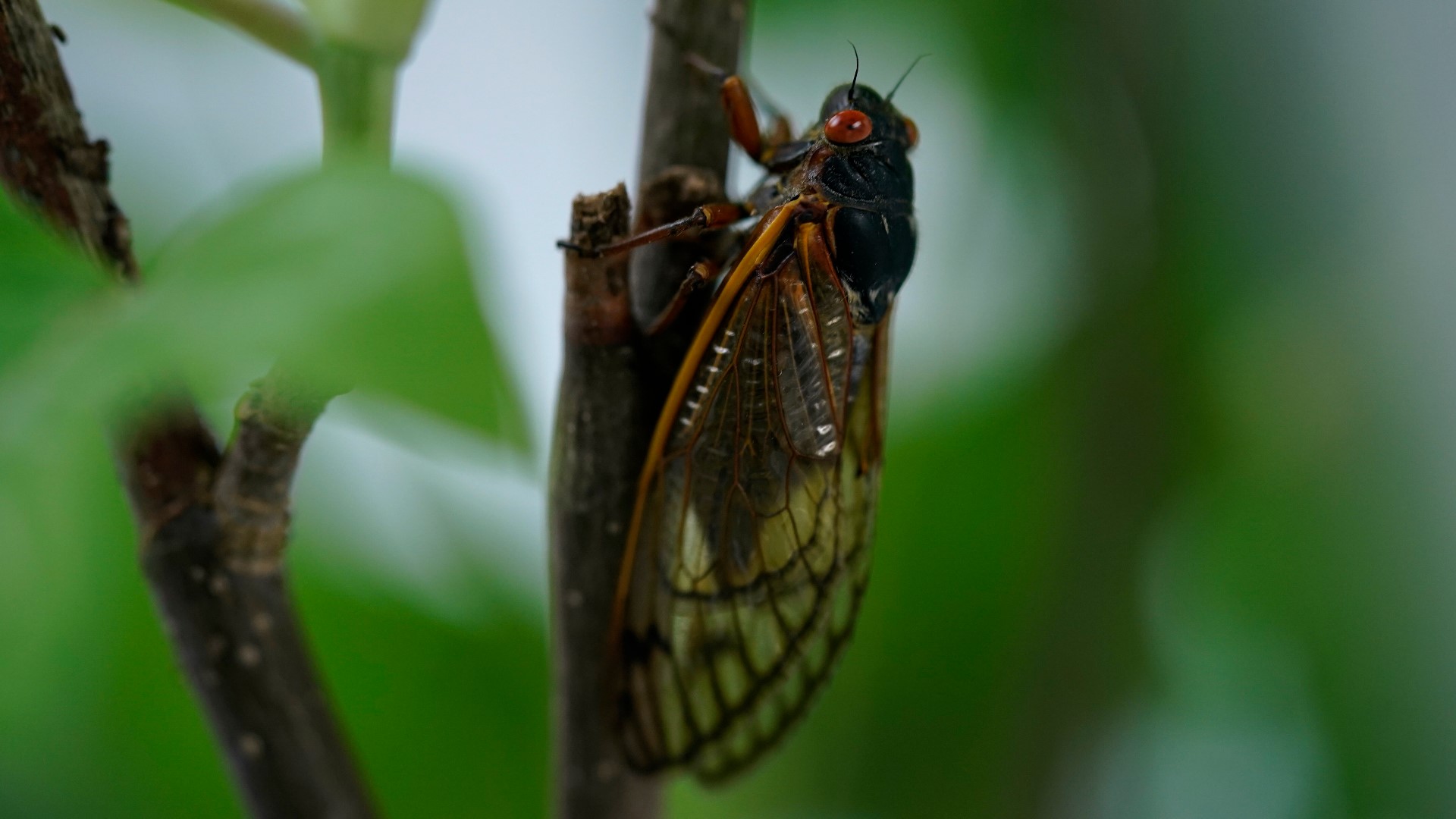ST. LOUIS — Missouri's peak emergence of periodical cicada Brood XIX is nearing, and the brood's early risers have everyone talking around the state.
The insects' appearance has quickly pushed "cicadas" to become one of the most-searched terms in Missouri, according to Google Trends. Interest in the bugs recently peaked, and shows no signs of stopping as hundreds of cicadas turn into millions.
Frequently asked cicada-themed questions were among the hundreds of thousands of searches. Ahead of the emergence, 5 On Your Side spoke to the state's leading cicada expert to answer some of the most-asked inquiries.


What are cicadas? What do cicadas do?
Cicadas are insects that are closely related to aphids, treehoppers, and spittlebugs, according to Missouri Department of Conservation Forest Entomologist Robbie Doerhoff.
The bugs are known for burrowing in the soil to grow and emerging some time later. There are annual cicadas, known as "dog-day" cicadas, which emerge yearly. There are also the much more elusive periodical cicadas, which emerge either every 13 or 17 years, depending on the brood.
Do cicadas eat?
Cicadas feed on water and sugar from trees as their main food source, helped by their unique mouth.
"[Researchers] call it a 'piercing-sucking mouth part," Doerhoff said. "They feed in the tree's xylem ... that transports water in the trees. They suck the water, the sap, out basically, but it's not very nutrient rich. So they're sucking a lot of xylem contents from a tree or plant."
Despite the large amount of cicadas feeding on trees during a periodical emergence, the cicada feeding isn't damaging to mature trees. Young or small trees, however, may be overwhelmed by the feeding, leading to experts advising gardeners not to plant new trees this year.
How long do cicadas live?
Even though humans may only see periodical cicadas for around six weeks at a time every decade or so, the bugs are actually actively alive for much longer.
"The females lay eggs in tree branches, and when those eggs hatch, teeny-tiny nymphs will drop from the branches to the ground and then they will start burrowing into the ground," Doerhoff said. "Then they find roots to feed on for the next 13 to 17 years ... when they come out of the ground, that's when they'll molt into their adult phase."
Periodical cicadas are juveniles for 13 to 17 years, depending on the brood, and then they're adults for around three weeks before they die.
Do cicadas bite?
Cicadas do not bite. Because their mouths have evolved specifically to feed on tree sap, they don't have the capability of biting humans or animals.
"They can't bite, they don't have that type of mouth," Doerhoff said. "And they can't 'sting' you with that type of mouth. As far as the rear side goes, females have a needle-like ovipositor that looks like a stinger, but they have no ability to sting."
There's nothing venomous or poisonous about the bugs, either, which is why they make an excellent protein substitute for numerous recipes.
How and why do cicadas make noise?
Only male cicadas make noise, and the noise is done to attract females for mating purposes. The females, once they find a mate, they'll approach that mate and click their wings, signifying to the male that they want to mate.
"It's like if you have a water bottle and if you squeeze it back and forth really fast, that cracking sound emits," Doerhoff said. "They have these body parts called tymbals around their legs ... they're rattling those tymbals, moving that organ back and forth, and that's how they make the sound."
Are cicadas close to emerging?
The question is hard to answer because of how localized and spotty the emergence is. The vast amount of ecological conditions that must line up, including soil temperature, humidity, tree health, etc., makes a peak cicada emergence's timeline differ from place to place.
"The earliest emergence I heard about was May 1 in Bonne Terre, where they started coming out en masse," Doerhoff said. "They started coming out en masse in my yard on Saturday, and then there were more Sunday ... Once you start seeing a lot of them, then it's begun in your area. I don't know how long it will last because we don't know what the population is underground."
What is the point of cicadas?
No species needs to justify itself to humans, and every form of life is worthy of respect regardless of whether humans know what place it has in its environment's ecology.
Ticks and mosquitos, for instance, are nuisances to humans, but play an important role in population control and as a food source for various animal species. But having a "point" isn't necessary for a species to justify its existence.
That being said, periodical cicadas have numerous research-proven benefits both during and after emergence.
"[Cicadas] provide really great soil aeration, especially in very compacted soils," Doerhoff said. "That benefits tree and plant roots because that provides areas for air and water to get into those very hard soils. They provide soil nutrients when they die. Even though they are stinky and gross and everyone hates their decomposing bodies, we actually see tree and shrub growth increase very rapidly in the three years after the cicad population has come out.
Cicadas also provide a ton of food to animal populations, including, but not limited to raccoons, bears and countless migrating bird species. Wildlife populations will be more successful this year because of the emergence's role as a food source.
"And, they're just really cool," Doerhoff said. "They're some of the longest-lived insects, they only occur in eastern North America, and, in general, they're just really super-duper neat things that we really don't know that much about."
Top St. Louis headlines
Get the latest news and details throughout the St. Louis area from 5 On Your Side broadcasts here.

